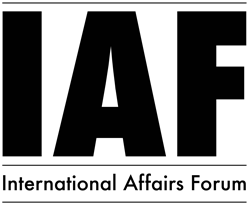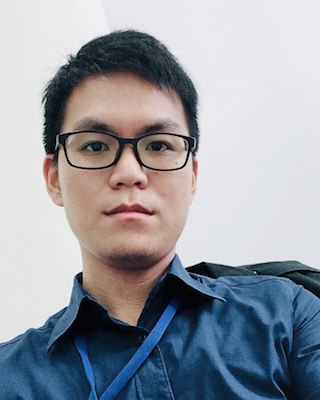| Sun. May 25, 2025 |
 |
|
||
|
||||
| ||||

There are two narratives about how the coronavirus disease (COVID-19) has become a pandemic. The first narrative started with the outbreak in Wuhan, China. This narrative contends that, due to the Chinese authorities’ partial information-sharing with the world, the Chinese government’s initial mishandling caused the current global pandemic. The other narrative claims that, because of unprecedented pneumonia cases in China, the Chinese government made a great effort to contain the epidemic and bought time for the West, but Western countries failed to counter the virus, resulting in a pandemic. Meanwhile, this second narrative says that China has already succeeded in controlling the outbreak with no new coronavirus cases domestically, becoming not only the safest country in the world, but also a heroic savior against the global pandemic. Does the latter sound contradictory to what we have learned? However, the second story is truly what China wants the world to believe, or at least wants its own ordinary people to think is the truth.
To weave this plot, the Chinese Communist Party’s authority launched a series of propaganda campaigns. First, to avoid the naming of novel pneumonia directly referring to Wuhan or China, the Chinese government stated that the disease should temporarily be named “novel coronavirus pneumonia” on February 7, 2020. A few days later, the World Health Organization (WHO), in tune with China, gave the disease an official name of COVID-19, with no description relating to Wuhan or China. Second, when the coronavirus cases were soaring worldwide, the Chinese propaganda apparatus started to claim that the coronavirus might not have originated in China, trying to obscure the origins of the epidemic. Finally, the WHO officially declared COVID-19 a global pandemic on March 11. Following the declaration, Chinese officials and state-media outlets began to accuse the US Army, who visited Wuhan last October, of the coronavirus transmission again, rewriting the whole story of the pandemic. This narrative helps China not only rebuild the self-confidence of its people under the CCP governance, but also deflect the blame on its role as the epicenter of the outbreak from the international public. Furthermore, the Chinese government started to aid Iran, Iraq, and Italy with teams of medical experts and provided medical supplies to countries across Asia and Europe, attempting to rebrand itself as a responsible superpower.
The efforts of a series of Chinese propaganda campaigns were covert at first, but have now overtly turned into information influence operations. For example, at the beginning phase of outbreak, a myriad of online posts on Chinese social media networks indicated the United States is severely suffering from influenza and that the Chinese state-media had been engaged in spreading this information. This move was the authoritarian regime’s typical domestic propaganda tactic to downplay the hazardousness of the local outbreak by comparison with the West in an attempt to direct public opinion. However, claiming that members of the US army are asymptomatic coronavirus carriers is another thing entirely. This conspiracy is total disinformation based on no scientific investigation. Unlike the previous moves to demonize or belittle the United States and other Western countries by political rhetoric, this even worse instance reveals that the Chinese government could produce disinformation and employ it publicly in order to ramp up its information operations.
This information influence campaign soon impacted countries with a majority of Mandarin speakers. In Taiwan, while the government has worked in collaboration with civil society to counter both the coronavirus outbreak and the disinformation originated from China, a pro-China former legislator, Chiu Yi, echoed Beijing’s conspiracy theory that the coronavirus might have originated in the United States. In another case, Malaysia, a multi-ethnic Southeast Asian country with 23% Chinese Malaysians, is also plagued with Chinese disinformation. According to my interview with an anonymous media professional from Malaysia, many elderly people in Malaysia consider that the Chinese government’s strategies to contain the outbreak are what Western countries should emulate. Some of them even believe that the United States is the origin of the coronavirus outbreak. This is because, as the source explained, “the news they read is pro-Beijing coverage by Malaysian media outlets and another reason is their deep rooted Chinese affinity.”
Besides Mandarin speakers abroad, overseas Chinese nationals who are exposed to Chinese media outlets and social media platforms as primary sources of information certainly support the CCP government’s crisis management amid the global pandemic. Thus, numerous pro-government online posts popped up and were circulated on Chinese social media. After Beijing’s propaganda blitz, overseas Chinese people and students flocked back to China, the safest country in the world in their mind. Yet, it has sparked the Chinese authorities’ fear of imported infectious cases while China is slowly recovering from the outbreak.
Almost at the same time, PengPai News (thepaper.cn), a Chinese online news media, debunked a series of fake news articles. These identical news articles, stating that the coronavirus outbreaks in different countries are spiraling out of control, were produced by three associated online technology companies with the same owner from Fujian, China. So far, it’s unclear whether the fake news articles are merely advertising-driven commercial activities or not. But since Chinese official propaganda can lead the way in coverage of state-media and private media, also including online media outlets, there is another plausible explanation that the companies’ owner is the scapegoat for the government’s misleading guideline of propaganda. However, one thing is for sure, the Chinese propaganda apparatus can launch official propagations to market itself and can also deploy so-called trolling armies to manipulate international public opinion in the digital world.
In recent years, experts and analysts could barely determine online fake news or disinformation originated from China by the usage of its words and terms, not to mention the difficulties to prove the direct connection to Chinese authorities. At this very moment, we are witnessing an authoritarian powerhouse, China, publicly disseminate disinformation to the world, directly and indirectly, guiding media outlets and pro-Beijing groups to wage a public opinion war in countries worldwide amid the global pandemic. And the price for democratic recipients is the deepening of domestic political polarization.
The regime’s survival strategies for an authoritarian state is to maintain social stability by oppression, co-option, censorship, and propaganda. With weaponized propaganda, China can easily condemn the West to deflect its responsibilities for domestic crises or transnational disasters, such as the pandemic, by employing outward disinformation campaigns. In other words, China’s ultimate end is to maintain the regime’s sustainability, and making its people and the world believe Beijing’s story becomes the necessary means. There is an old saying, “Repeat a lie often enough, and it becomes the truth.” Apparently, China has proved that it has the capabilities to weaponize external propaganda to influence countries globally.
Victor (Lin) PU is an analyst currently based in Taipei and a former staffer at the Institute for National Defense and Security Research (INDSR) and National Security Council, Taiwan. He has an M.A. degree in political science from National Taiwan University and focuses on issues related to authoritarian diffusion and Chinese influence.
| Comments in Chronological order (0 total comments) | |
| Report Abuse |
| Contact Us | About Us | Donate | Terms & Conditions |
|
All Rights Reserved. Copyright 2002 - 2025